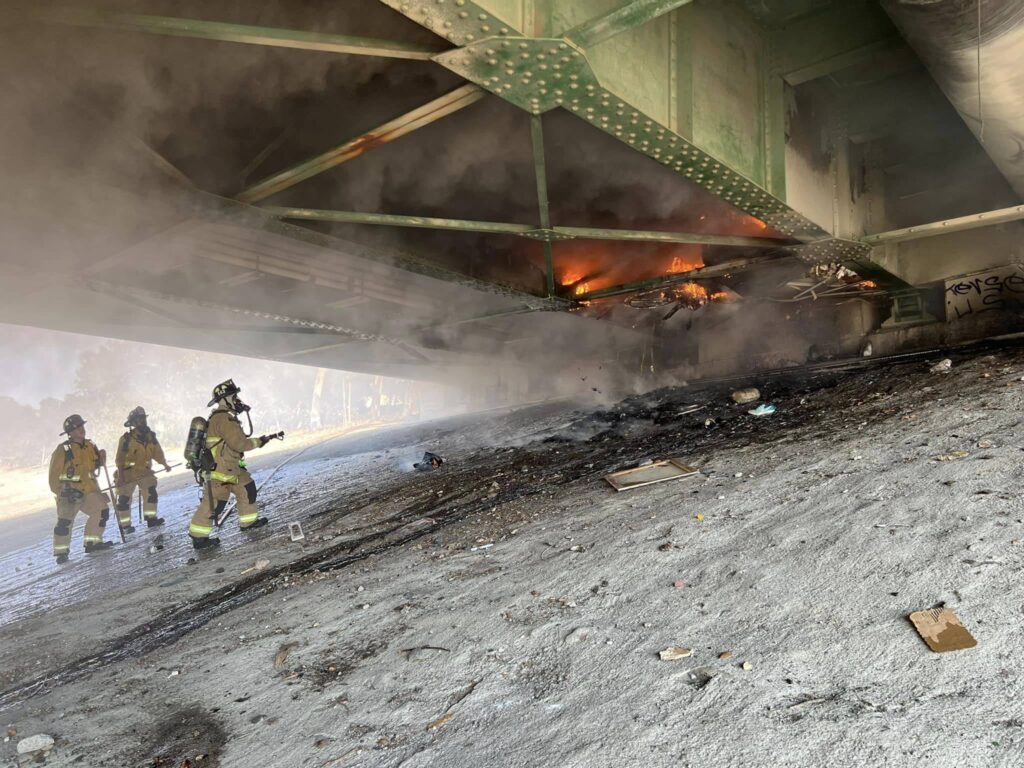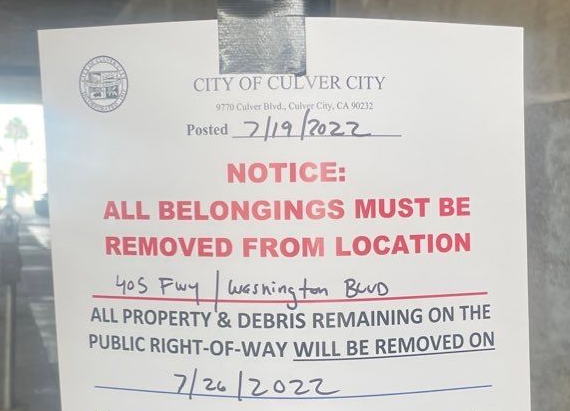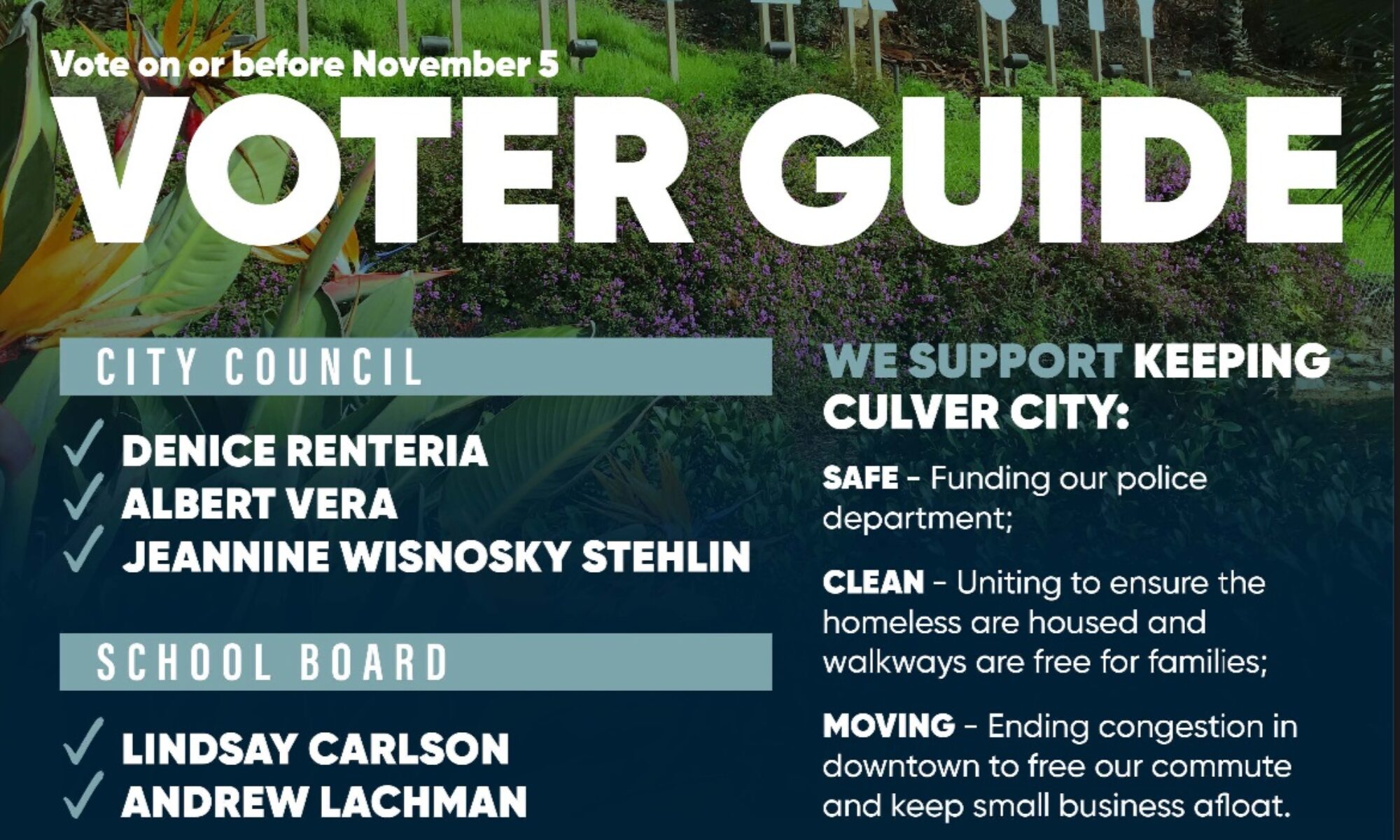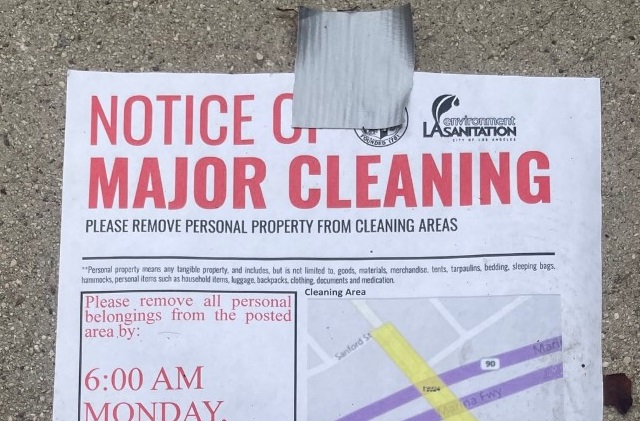
At least six fires have erupted in camps along Ballona creek in Culver City this year – two in the last month. A camp persists at the footbridge, less than 250 feet from Farragut Elementary. Residents complain to the city about the obvious public safety issued, especially for children walking to school. And yet the city does nothing. We’re asking “why?” as Culver City readies to elect two new councilmembers in November. We’ve sent a questionnaire to candidates and councilmembers for their opinions on this issue.
Residents will have a distinct choice between candidates who want to maintain this “hands off” policy, versus those who think they present a public safety issue that must be immediately addressed.
Hands On:
Dan O’Brien: “I believe the vast majority of our residents want our leaders to enact an ordinance similar to Los Angeles MC 41.18, while tirelessly seeking safe and secure housing for those in need. This is not an either/or equation. We can show compassion to both the unhoused AND those who own and rent in Culver City.”
Denice Renteria: “Doing nothing and letting individuals remain on the street is inhumane and unfair… I would also be in support of the city conducting regular routine checks in more vulnerable areas of the city and public open spaces. We need to uphold the safety of all individuals in the city, unhoused or not.”
Hands Off:
Councilman/candidate Alex Fisch: “the evidence is overwhelming that homelessness is a housing problem… I am open to hearing other cost-effective, humane, and just opportunities to say “yes, this is where you can be” instead of … “no, you can’t be here, not there either.”
Freddy Puza: “Studies consistently show that homelessness is overwhelmingly caused by lack of affordable housing… Criminalizing poverty is not only inhumane, it is much more expensive than providing housing and support.”
Unsure:
Khin Khin Gyi: “We could pass an ordinance similar to that voted on by the City of LA whereby the encampments must be a certain distance away from schools, nursing homes, places of worship or businesses, etc.”
What the Councilmembers Say
We also sent our questionnaire to the councilmembers, for clarification on hands on/hands off and what they mean by sweeps. Councilmembers Eriksson and Vera weighed in (Lee and McMorrin did not respond):
Vice-Mayor Albert Vera: “[Sweeps] should consist of advance posting by the city so that the unhoused are aware of what is happening and have the opportunity to move any of their possessions. The city would then come in with a team to clean up any dangerous items – syringes, urine, fecal matter, etc. – and pressure wash the sidewalks. Once that process is complete, the unhoused would be free to move back into the area.”
Councilman Goran Eriksson: “Culver City belongs to a very, very small group of cities in LA County that have adopted a “hands off approach” when it comes to some form of enforcement to assist our housing/mental outreach… When we talk about “encampment sweeps”, they are very often necessary.”
Martin v Boise, LAMC 41.18, and why the encampments issue is so complicated
Culver City is not alone with encampment problems – we see them all over LA. This is due to the Martin vs. Boise decision, which established a simple rule – we can’t “punish” someone for a “state of being.” Meaning if someone is homeless and they have “nowhere to go”, we can’t fine or imprison them for sitting somewhere. But this ruling gives a lot of latitude in interpretation. For example –
if a city can offer shelter, and they don’t want to go, can we compel them to leave?
Once a city has shelter or housing to offer a transient, this ruling is rendered void because the person now has a choice. Yet professional activists have been pushing the idea we cannot, unless the transient willingly accepts. They’ve pressured councils and candidates to adopt such a “hands off” policy with camps. This started in Culver City in 2019, when an LA Times article on the Venice/405 camp prompted the Sahli-Wells led council to end police interactions with the camp. Council further codified this “hands off” policy at their April 26, 2021 meeting. It got the predicted “yes” votes from Lee, Fisch, and McMorrin and Lee, while Eriksson and Vera voted “no”.
The Culver City Democratic Club has also taken on the activist perspective on transient camps. They issued an endorsement questionnaire which inluded two key questions about camps: LAMC41.18 limiting camps near schools, and opinion of encampment sweeps. Dan O’Brien is not included because he wasn’t registered Democrat at the time.

LAMC 41.18- what is it?
Cities have worked around Martin v. Boise with a simple policy – offer shelter, and pass no camping ordinances. Santa Monica has successfully enforced a no camping ordinance for many years, while our current Council has refused to discuss it. Meanwhile, the City of Los Angeles is pushing a more lenient rule – no camping within 500 feet of schools and other sensitive locations. While this makes sense to average residents, activists rioted at city hall over this. Meanwhile the Culver City Democratic Club based their endorsement on opposing 41.18. Both Alex Fisch and Freddy Puza opposed such an ordinance. Dan O’Brien has expressly supported such an ordinance.
Sweeps, what are they?

Encampment Sweeps are another seemingly benign rule. The city wants to do basic sanitation over a section of sidewalk occupied by a camp – literally “sweep” the sidewalk. They post notice letting transients know to pack their belongings and vacate the space while they clean, then they come in and clean up, and once they’re done people are welcome to bring their camp back.
Activists have managed to portray it as some horrific atrocity – Stormtroopers raid an unsuspecting camp at 4am and sweep the homeless away to concentration camps! They’ve been successful enough at this to fool most people and many candidates on this issue. Again, in the CCDC questionnaire, Fisch and Puza opposed sweeps, while Renteria and Gyi were undecided. O’Brien also said he was undecided, saying it’s “not a simple answer”.
The problem with opposing sweeps is this means the city will not touch transient camps, ever. Electing people to Council who oppose sweeps means the city will keep this “hands-off” approach, which will allow these camps to fester and grow.

